Merfyn Owen is one of the renown naval architects and their racing yacht designs are competing against the who-is-who of the regatta scene. When he recently posted a new facebook title picture I was intrigued: New racing boat designs especially those of the more restricted box-rule classes are of utter interest for me, so I contacted him if he could tell me more about his new project.
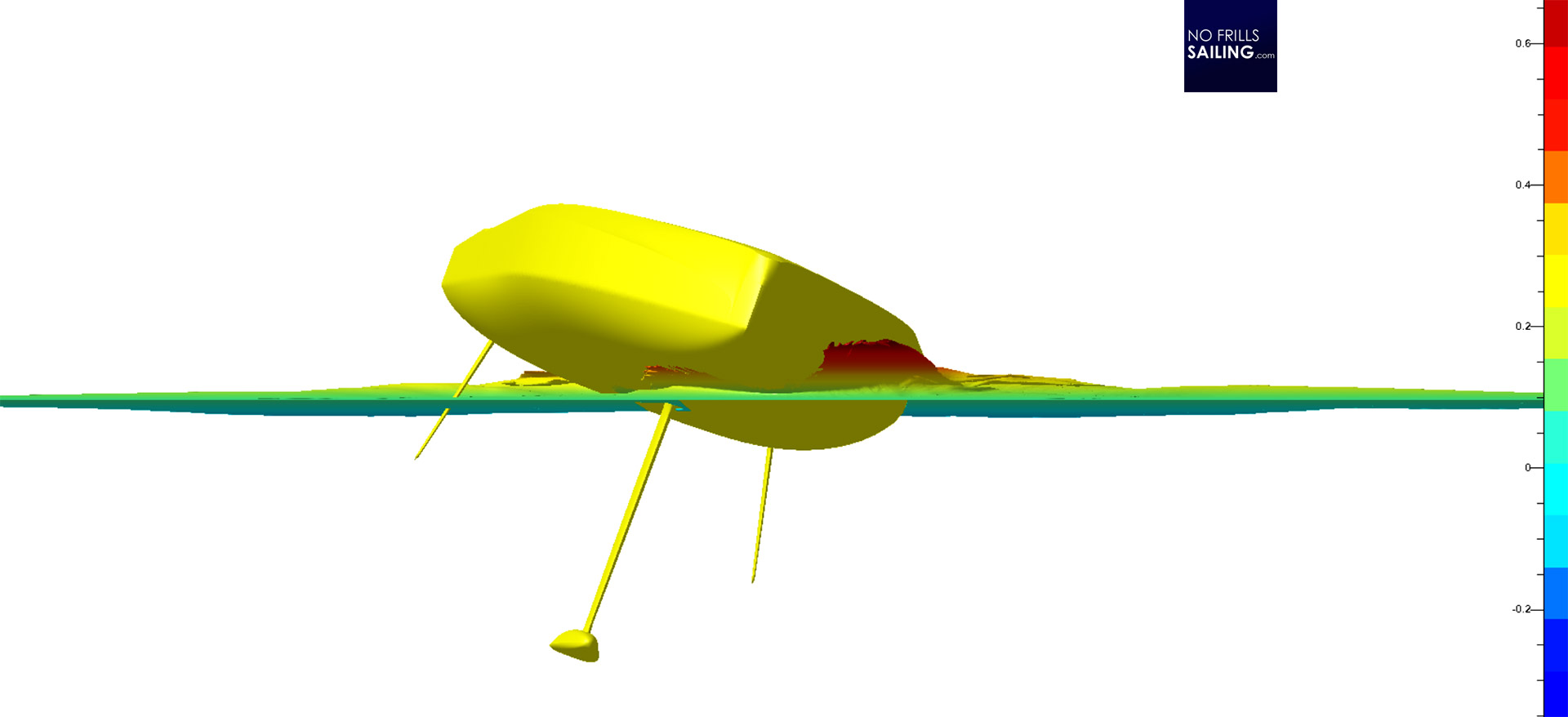
Pro as he is, I received an instant answer: “Of course, would love to!” Much more surprising than his prompt answer was the level of insight and information density he openly and freely started to share with me as normally – especially with ongoing projects – those infos are much more restricted. So, here we are: Let´s talk about this ominous new racing yacht in Merfyn´s facebook-title …
Talking to Merfyn Owen about DRAGON
Lars Reisberg | NO FRILLS SAILING.com: “Merfyn, mid of this year you posted this picture (above) in your facebook-account and hinted a new project: Could you please shortly introduce this new boat to us?”
Merfyn Owen | Owen Clarke Design: “Yes, of course, Lars: This is Owen Clarke’s sixth generation Class 40, a scow. She will be the nineteenth of our designs built to the rule.”
NFS.com: “Can you disclose the client or customer who ordered this boat from Owen-Clarke-Design?”
Merfyn Owen: “The client is a return customer, Michael Hennessy who previously had #54 Dragon, one of our second-generation designs. Our new project, his boat, will be Class 400 designation number #200. So, the 200th such boat measured to the Class 40 rule: The yacht is 12.19 meters length over all with an additional 2 meters bowsprit. Her maximum beam is 4.50 meters, draft restricted to 3 meters and a minimum class displacement of 4.580 kilograms plus 750 liters of water ballast each side. Her upwind sail area is of 115 square meters.”
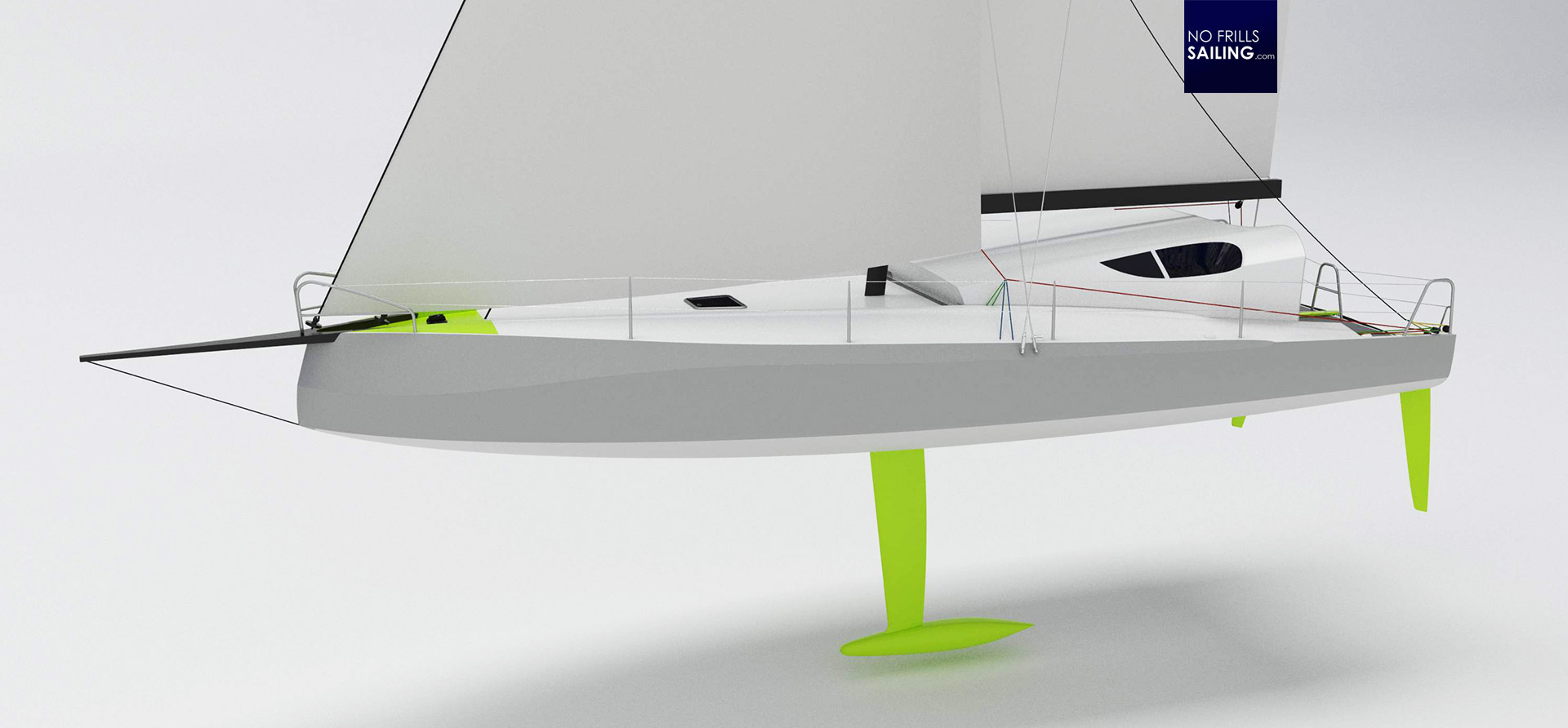
NFS.com: “For which races or highlight-races will this boat be principally built?”
Merfyn Owen: “A good question, Lars, because this is the first of our boats that has been designed specifically for the Route du Rhum. Historically, most of the French designs since around the year 2008 have been developed in a four-year design cycle aimed specifically at that race, the most important event in the Class 40 calendar for the French professional 40’ sailors and their sponsors. All Owen-Clarke clients on the other hand since our first 40’ design in 2004 have been Corinthian/amateur sailors and our boats have been developed to perform well in a wide range of conditions that are encountered in other events such as the Normandy Channel, Fastnet, Azores and Transat Jacques Vabres-races. In 2015 we also designed a masthead rigged Class 40 called LONGBOW #143, for another American client, specifically aimed at the North American circuit: The Newport-Bermuda, Bermuda 1-2 and Atlantic Cup.”
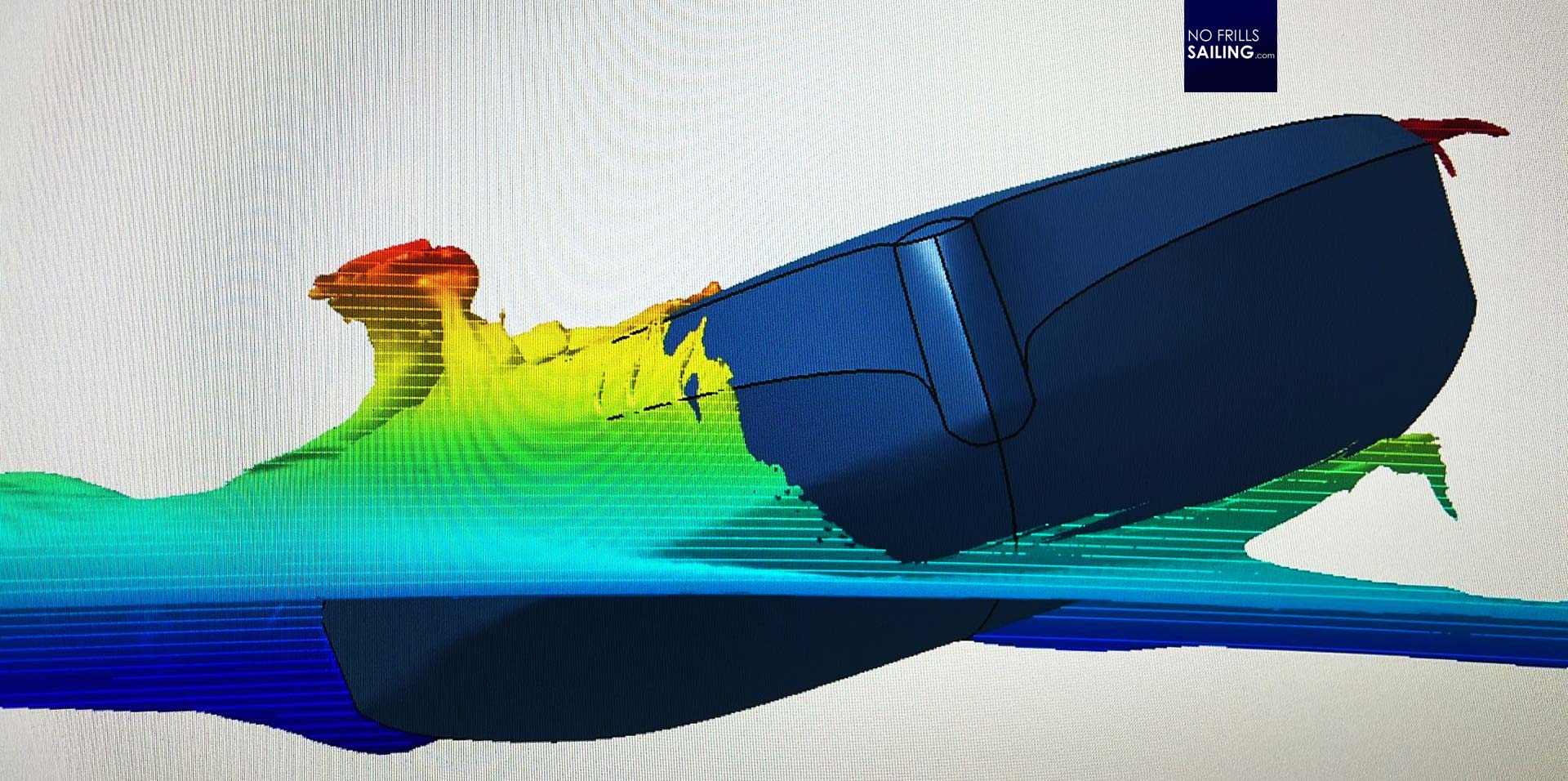
NFS.com: “So this indeed is a special boat! Are there any other designers or developers involved in this project?”
Merfyn Owen: “Yes, we had Peter Hobson on the team again, who worked on the LONGBOW project. His brief was primarily the lifting steering design, the cockpit layout and line handling systems. Since LONGBOW, Pete’s now on his third Vendee cycle as designer for Alex Thomson Racing. For the composite and keel engineering we worked once again with PURE, Team New Zealand’s IACC engineers. Integral to the design process has also been Illy Brummer at Axxon Masts and the owner’s sailmaker, Mark Washeim, and the team at One Sails.”
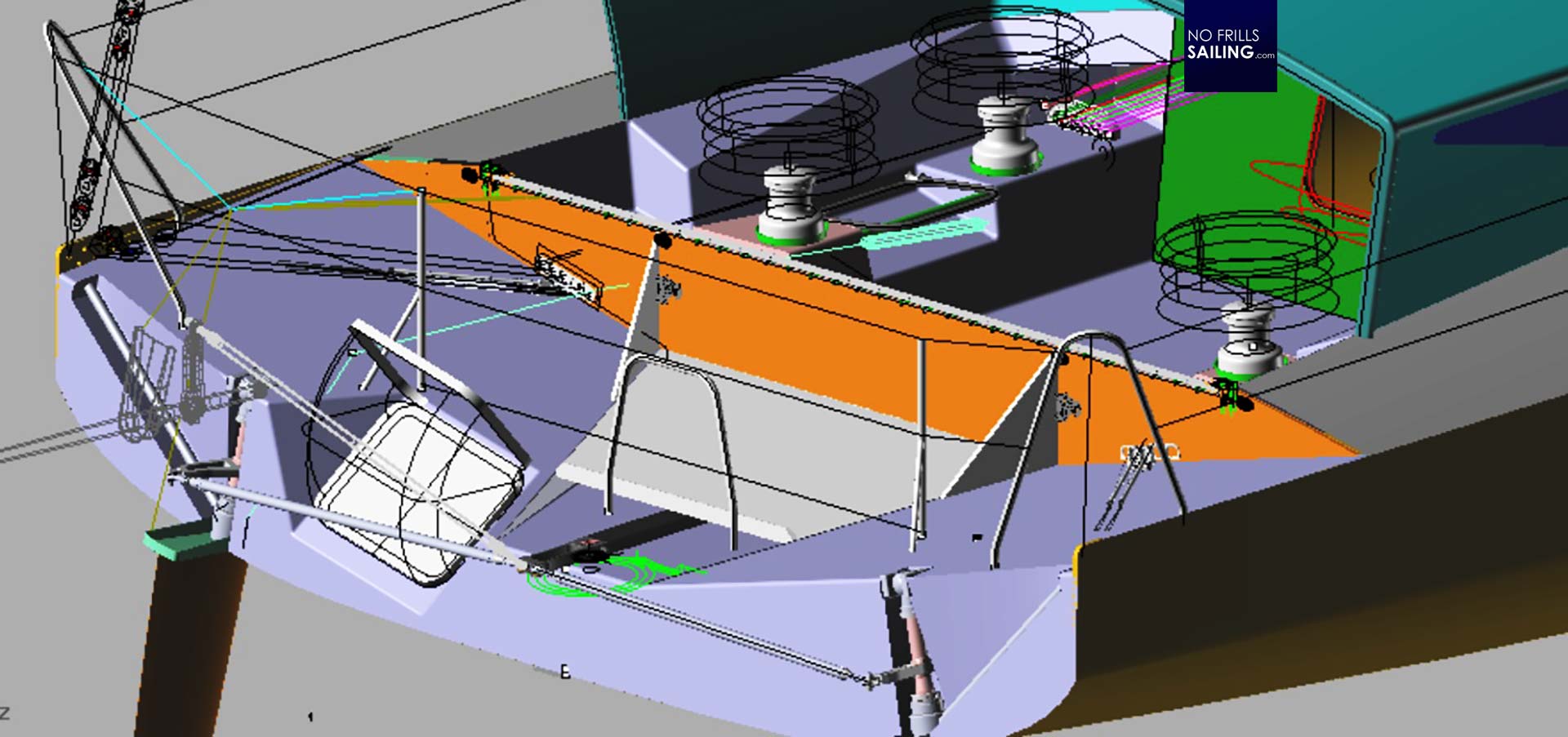
NFS.com: “What will this new boat be like? What are the main characteristics, what will she be very good at sailing conditions-wise? Are there any principal differences from current Class 40 designs?”
Merfyn Owen: “From the outside the most obvious difference between this and previous generation designs, as well as other racing boats is of course the scow bow. But this high-volume bow is the result of the hull design, not a feature that is then worked aft to develop the hull. This new design carries her maximum waterline beam and volume well forward of the mast. The result is a yacht that has 25 to 30 % more righting moment, or power, than a conventional Class 40. Another aspect of the rule is that it limits the water ballast volume to 750 liters on each side. If ballast was not limited, we would want to design in 1.250 to 1.500 liters of ballast for each side. So, we use weather modelling to optimize the position of the 750 liters in order to target the design for specific races and events. For this design, like on LONGBOW, we have three ballast tanks each side but they are further aft than previously, thus optimizing the boat for reaching rather than all-round polyvalent performance.”
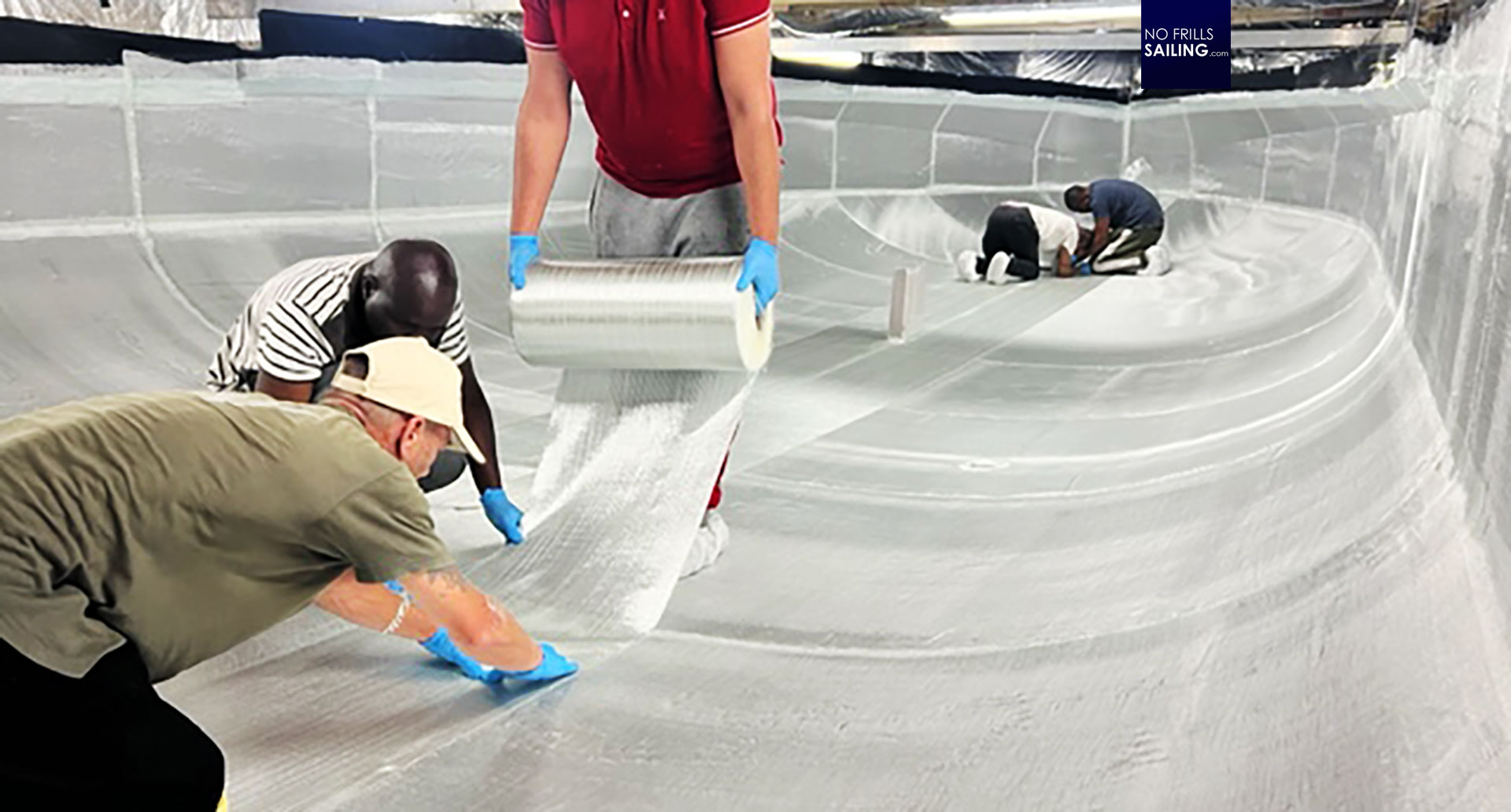
NFS.com: “I see. It seems that those limits of the box rule aren´t so limiting at all but more so initiating or catalyzing more innovation and experimenting. Are there any other details within the construction which you would describe as revolutionary or brand new?”
Merfyn Owen: “Well, the sheer power and speed of these boats means that they are very wet. Before construction began in South Africa, we built a mock up of the cockpit and coachroof in the UK. Over several days of design-meetings we sat Mike in it and worked through the ergonomics of working in it to make sure every detail was perfect. DRAGON has the highest level of cockpit protection of any of the current Class 40s with a large over-hanging coachroof which is covered in high-efficiency solar panels. These panels mean the yacht is not reliant on its diesel engine or hydro-generators for making electricity. The rudder is also a highly refined design, a machined high strength hard anodized aluminum alloy stock with a kick up system based on JP3 upper and lower bearings. Highly customised to save weight and improve survivability in case of impact. Last not least, as with IMOCA 60s, but unlike most of the current fleet of Class 40s, to save weight and improve efficiency the cockpit layout relies on several highly customized pieces of deck hardware rather than off-the shelf organisers and jammers.”
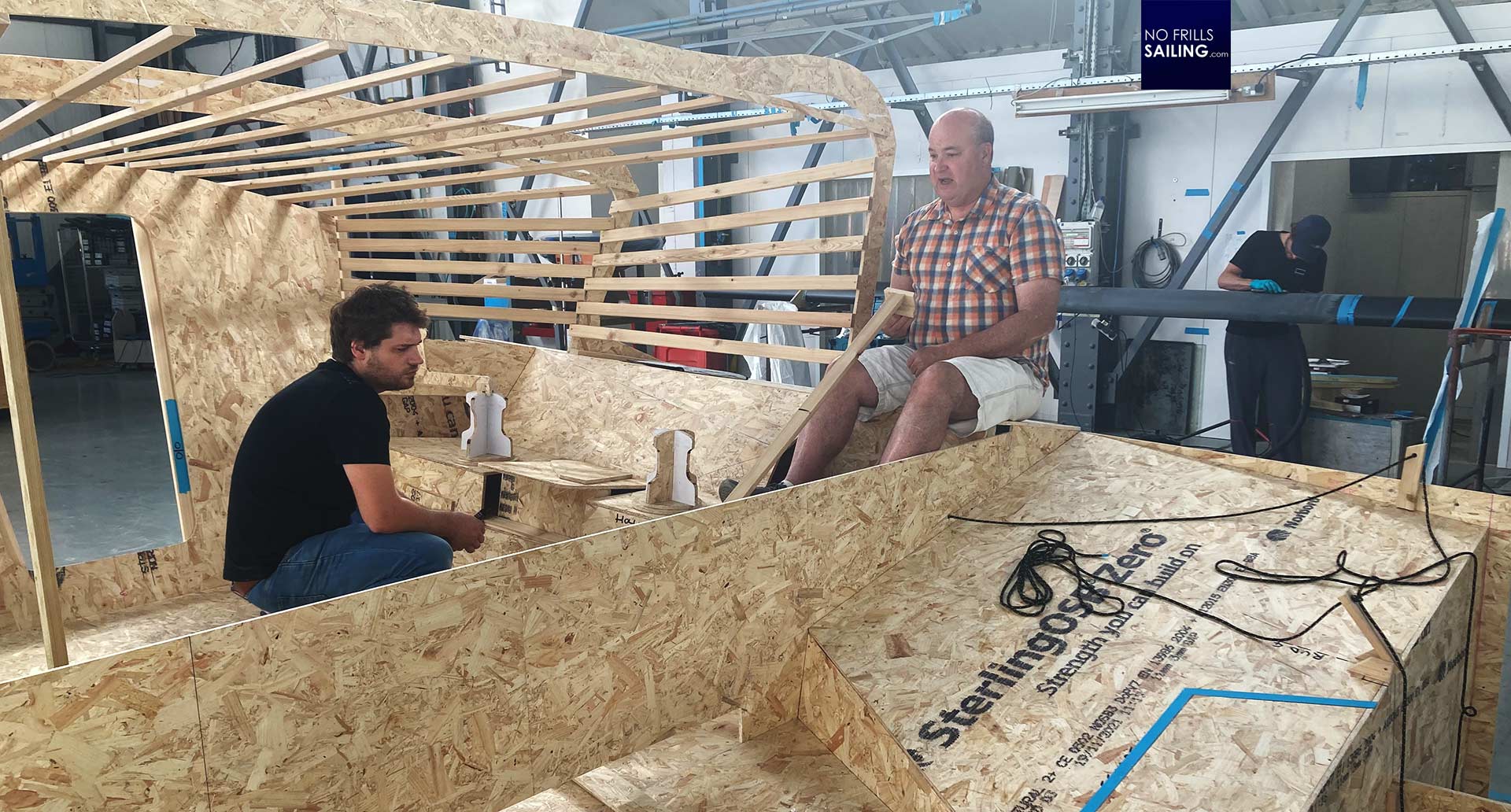
NFS.com: “… a lot of innovation, for sure.”
Merfyn Owen: “Yes, there are numerous small innovative details, parts of the interior and exterior that save weight and/or lower the center of gravity of the structure. This is especially important in a scow design, because the additional volume and righting moment comes at the expense of a significant increase in surface area of deck, hull and interior.”
NFS.com: “Merfyn, what is the timeline in building this boat? Who is building this boat?”
Merfyn Owen: “The project plan from the start was to build the composite components at Evolution Marine in South Africa, with a small group of specialist builders from overseas supporting the local team and acting as owner’s representatives during this phase. As we have done with two previous projects, the assembled composite structure would then be sent to V1D2 in Caen, where all the Class specialised fit-out, like steering, deck hardware, keel assembly and mast stepping would be undertaken. This means that the labor-intensive parts of the program, like mould building and composite construction, would take place in a country where the yard overhead is very competitive. The knowledge and experience in Class 40 and offshore racing that a French yard like V1D2 brings can then be used to complete the boat to a high specification, in this case before this year´s Transat Jacques Vabres. Late delivery of the composite hull and deck meant that the plan changed because it was obvious the boat could not be made ready in time to qualify for the TJV and so she was shipped to Maine Yacht Centre for final fit-out.”
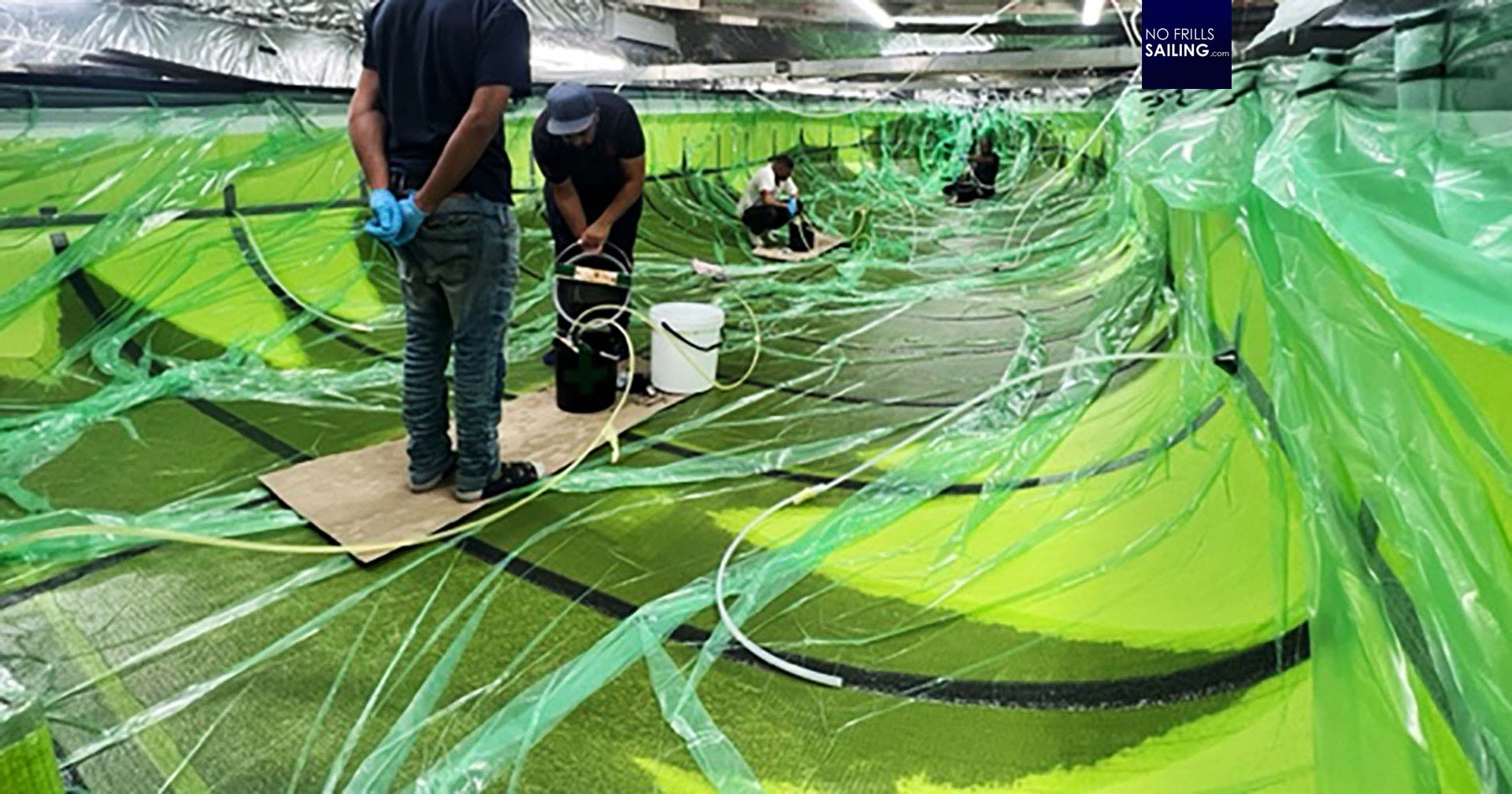
NFS.com: “I personally find it so interesting to see that building a yacht for such a use-case is much more complicated and involves many more people and milestones …”
Merfyn Owen: “Oh yes. And it is even more interesting: Main Yacht Centre for example is run by Brian Harris, also a very experienced IMOCA 60 and Class 40 preparateur and owner himself who recently completed a round the world race on his own Class 40. He used to be the North American agent for Akilaria and undertook similar fit-out work on a number of Akilaria first, second and third generation designs. The fit out at MYC is being managed for the owner by Kyle Hubley, a professional sailor who was part of the build team in South Africa and is himself a former Class 40 owner. Regarding the timing, as launch from the Maine yard is likely to coincide with the cold weather on the east coast it is unsure when the boat will be moved to Charleston SC, where Mike has traditionally operated from in the Winter. We are unsure at this point if the first event will the RORC Caribbean 600 or the 2024 Atlantic Cup. Currently the plan is to take part in the fully crewed Quebec-St. Malo Race and then undertake some racing in Europe.”
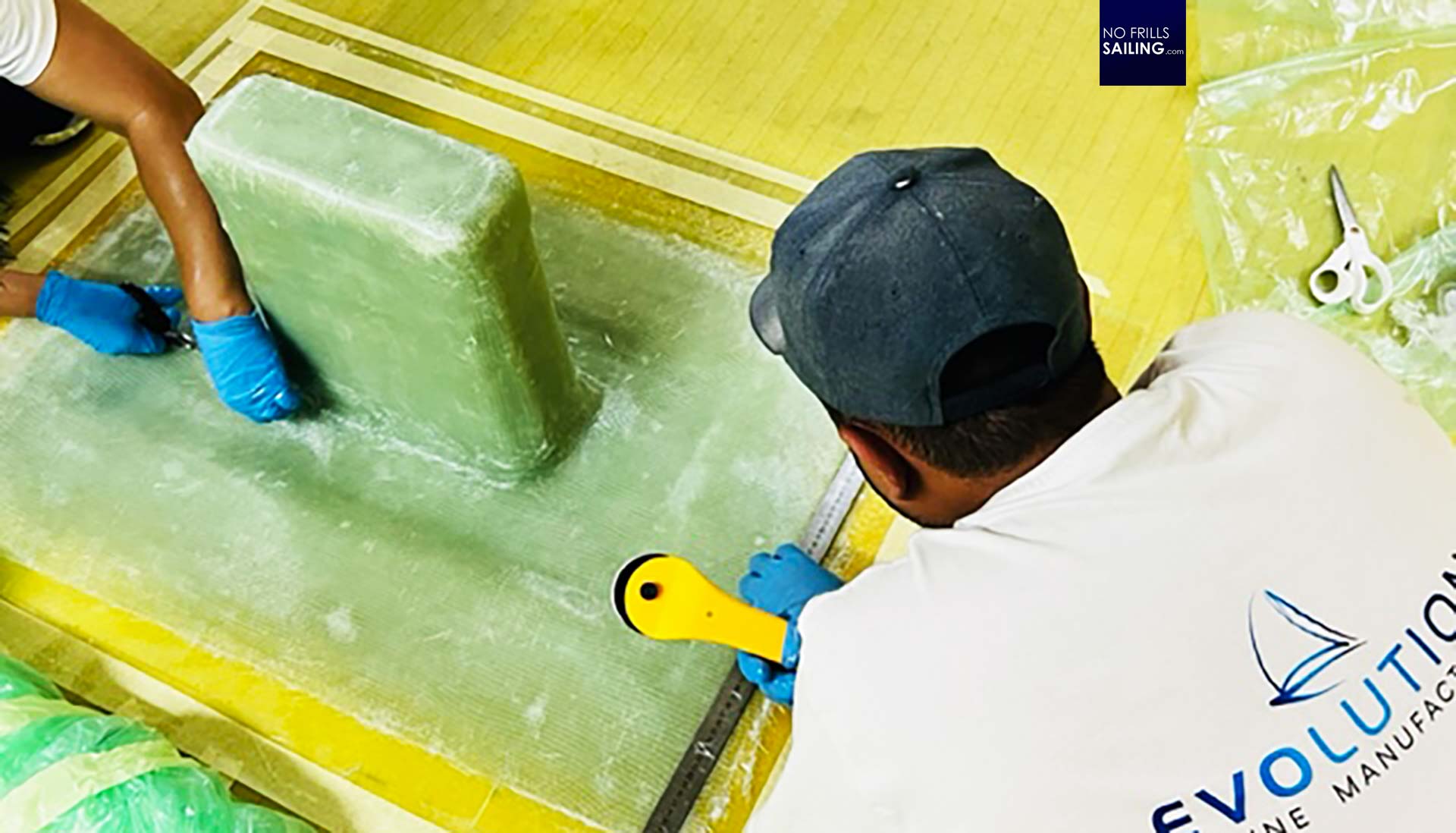
NFS.com: “Which will be absolutely exciting for DRAGON´s owner, I am sure! I can imagine that building such a yacht is connected to a lot of challenges to overcome. Could you give some more insight into high-end racing boat building process?”
Merfyn Owen: “Well, as the Class 40 rule has a minimum weight that a boat must hit to be competitive and because of the very large surface area of a scow design achieving this target is much harder and involves designing a more complex structure than previously. On this Class 40 the internal supporting structure aft of the mast is based on a system of longitudinals. But unlike our 60s, forward of the mast this changes to athwartship frames, seven of them in total. This and other details have put more pressure on the yards building these boats in terms of the skill level required and the attention to detail in areas such as resin/fibre content for both secondary bonding and the hull/deck/parts infusion process. You see, if these ratios get out of control, then for the same number of parts, significant weight can be added to the yacht and unless there is monitoring during the build this will come as something of an unpleasant surprise during the measurement process.”
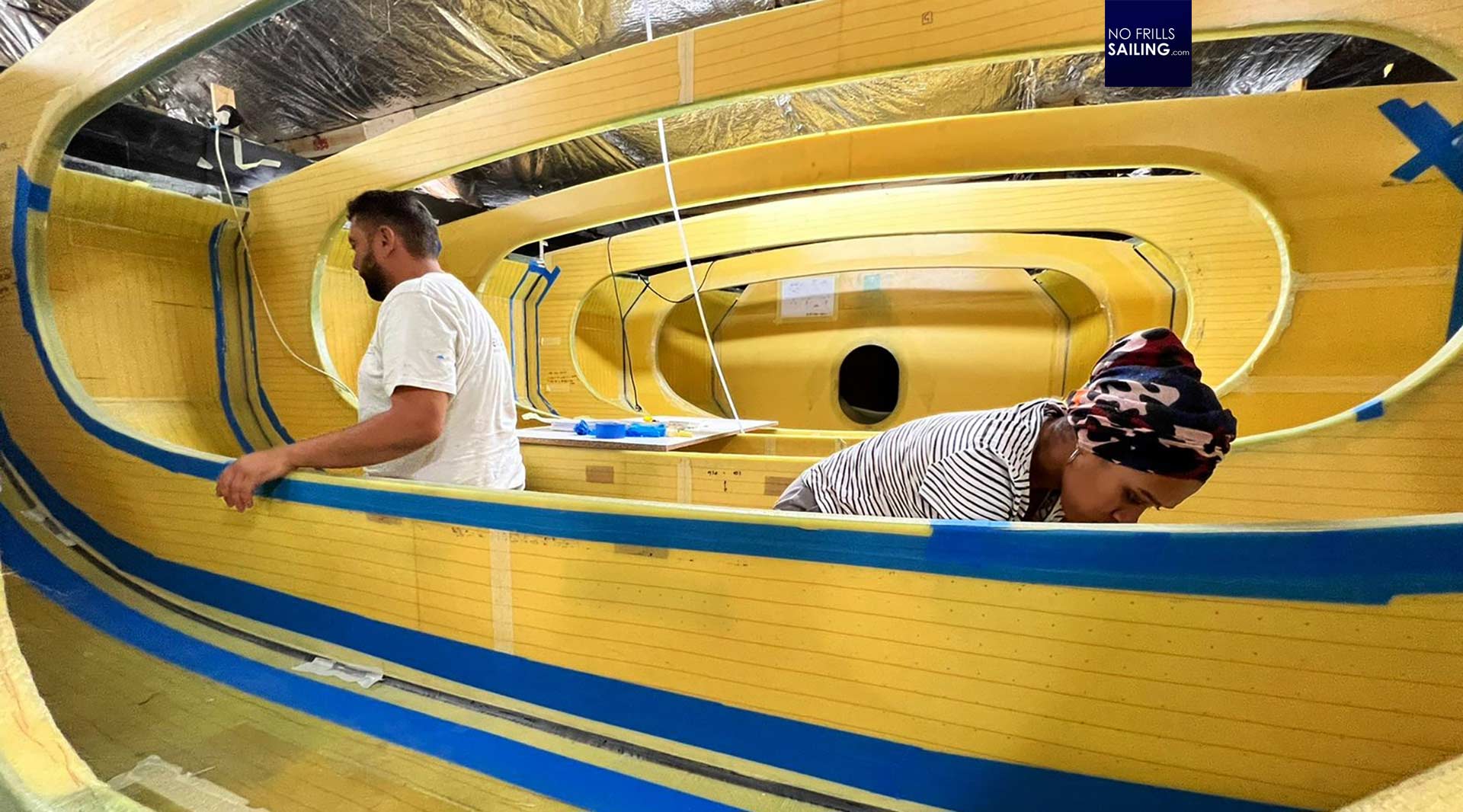
NFS.com: “Which explains the high budgets needed in racing …”
Merfyn Owen: “Yes, and obviously one of the challenges of building a long distance away from the designer’s and/or owner’s base is ensuring that was is designed is built, and to the right quality. OC have a good deal of experience in managing this aspect of such a project, going back to the time when we oversaw the build of Ellen MacArthur’s KINGFISHER in New Zealand, and before that Team Group 4 in France. Both times this involved the client having their own people on site full time and this is how the project at Evolution was also planned. In addition to a physical presence, real-time data was also commissioned to monitor quality during the build. The hull plug was laser scanned prior to mould production, test panels were made prior to infusion and NDT/ultrasound testing of the hull, deck, and assembled parts was undertaken once completed.”
Not without challenges though
Merfyn Owen: “The result of all these efforts is that the completed composite structure, when checked on two separate loadcells, is 80 kilograms below the required mass on boat #1, a significant achievement! This is not to say the build was without its challenges, few ever are. During IMOCA 60 builds I have personally required the scrapping of components, bulkheads, and a keel on a previous occasion. During this build one of the reasons the composite assembly was late is that more core had to be shipped and a second complete deck built, when the inside skin, the last infusion process was less than perfect the first time around.”
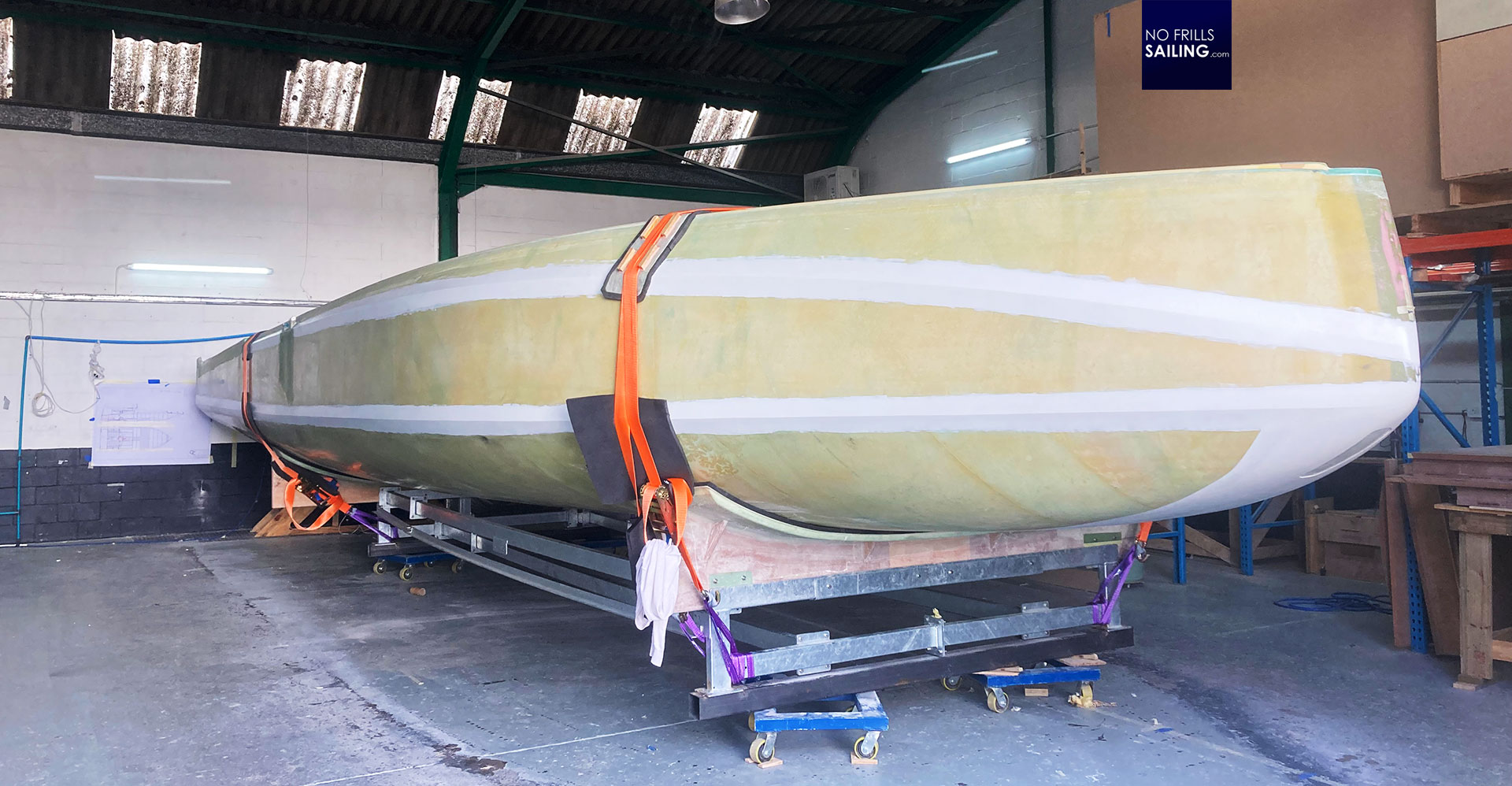
NFS.com: “This is absolutely incredible, Merfyn! So different from what I get to see on a daily basis and certainly many levels up. But what I find most exciting is the level of determination and passion that everyone displays, making such a project become reality!”
Merfyn Owen: “Absolutely, Lars! Let me finish on a positive note: While not the easiest or simplest project, along with LONGBOW, this Class 40 #200 is without doubt the most innovative and, shall I say “tidy” Class 40 build we have been involved with to date!”
Thanks so much, Merfyn, for this exclusive insight into the making of your latest project DRAGON. I will certainly check on the performance of this boat and hope to see her in real life soon when I happen to be roaming the hotspots of racing in France in the future!
More Class 40-related articles may be browsed here:
Merfyn Owen, Britton Ward and the legendary Marc Lombard on Class 40 designs
Visiting the all-new Pogo 40 S4
Meeting Henrik Maswkowitz aboard his Akilaria RC2
